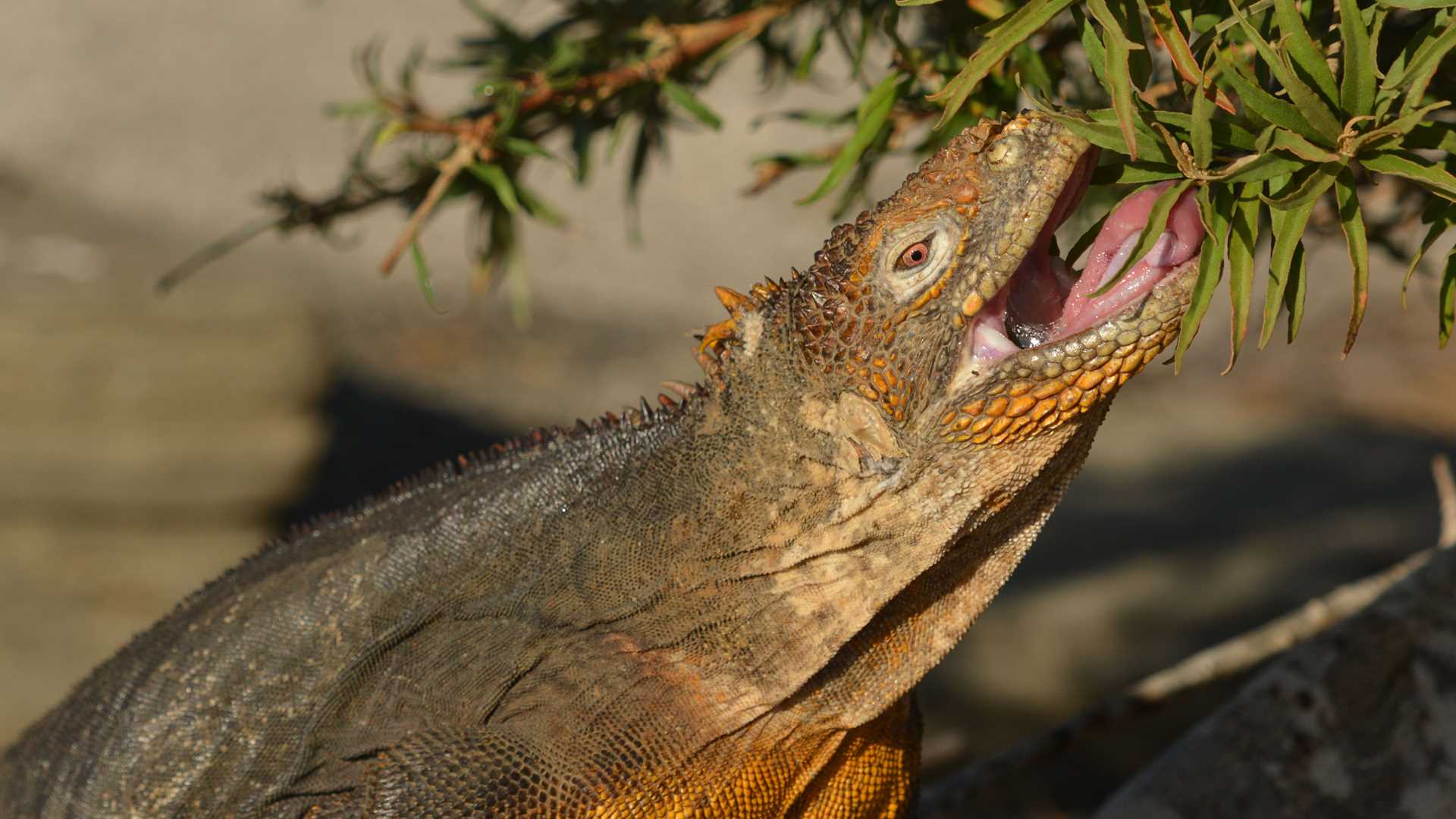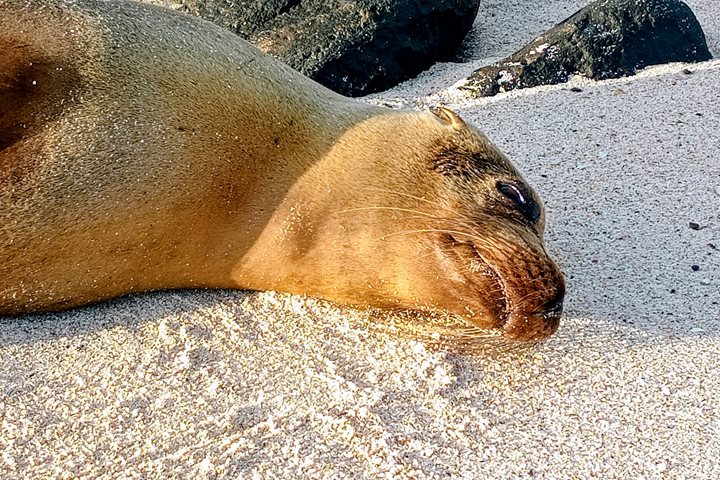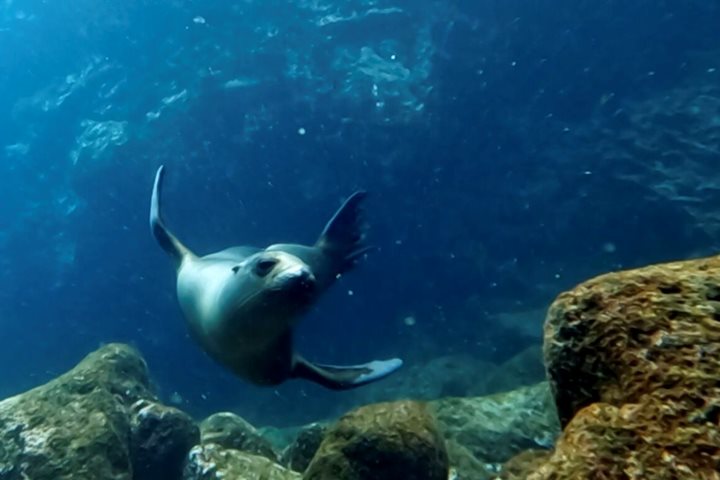Santiago Island is one of the beautiful places that captivated the attention of naturalist Charles Darwin during his visit to Galapagos. This island was the one Darwin visited most, and it is home to many endemic and native species. Santiago has highlands and freshwater. In the 1950s and 1960s, it was colonized by an Ecuadorian company that mined the salt located inside the crater of an extinct volcano. The pink color was much appreciated at the time, and the salt was exported to mainland Ecuador.
Today, this island has become an icon in the recovery of ecosystems destroyed by introduced species, especially pigs, goats, and rats. Lindblad Expeditions was part of an effort with the Galapagos National Park to support the eradication of introduced animals. Populations of tortoises have been recovered. A few years ago, the Galapagos National Park began reintroducing land iguanas (conolophus subcristatus), which were extinct for many years. The iguanas were eradicated by introduced animals, especially the feral dogs that fed on them. Nowadays, 100% of the island is a national park.
Today we had the opportunity to visit this beautiful island. Early in the morning, we started our activities, disembarking on Espumilla Beach. We walked along the site, which is a sanctuary for the green sea turtles that nest there. Along the black beach, we observed many pelicans and blue-footed boobies in a feeding frenzy. Almost at the end, we observed two Galapagos hawks as they flew very close to us and landed on a tree.
After breakfast, more activities were offered, including kayaking, snorkeling, and even tours in the glass bottom Zodiac for guests who didn't want to swim. We observed a large amount of marine life, including sea turtles and many tropical fish. The sea lions, of course, were company for all of us during snorkeling and kayaking.
In the afternoon, we started activities at Puerto Egas. Some guests opted for a walk along the intertidal zone, while others preferred snorkeling from the beach. I was with a group of hikers. Along the trail, we observed many migratory birds, including whimbrels, semipalmated plovers, ruddy turnstones, lava herons, and some pelicans resting on the rocks. Walking along the sandy areas of the trail, we found the land iguanas from North Seymour Island that were reintroduced by the Galapagos National Park. Nowadays, the iguanas are discovering their new habitat, which is much larger and full of vegetation. We found some of the iguanas feeding on the local vegetation, while others simply basked in the last rays of the sun.
Almost at the end of the trail, we came across a pair of Galapagos hawks feeding on a Galapagos sea lion’s placenta. The hawks watched us carefully. We could make out a male and a female together. After a short time, both took flight towards the trees.
It was already late in the day when we returned on board with the last rays of the sun. We will all remember how amazing this day was. It was an excellent end to our expedition. We enjoyed following in the footsteps of Charles Darwin, the naturalist who, many years ago, was captivated by this wonderful island in this natural paradise called Galapagos…just as we, too, have been captivated throughout our expedition.







